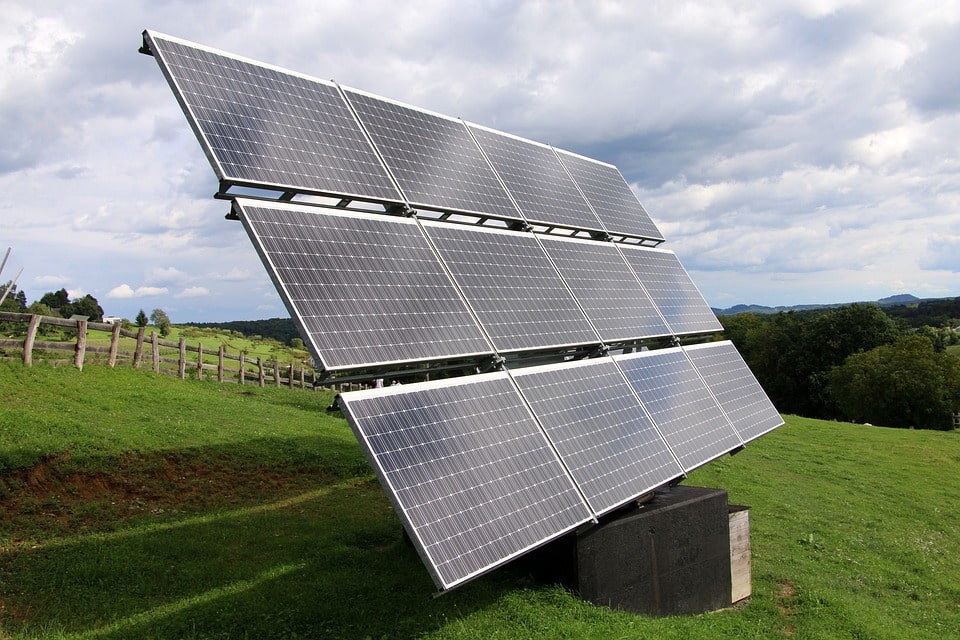Indicators of financial efficiency of energy saving measures
To analyze the effectiveness of investments in energy saving measures (ESM), it is necessary to calculate the indicators of financial efficiency, which include: the expected annual savings of energy resources in kind; initial cost indicators; criteria of economic efficiency of technical decisions.

Initial cost indicators are the basis for further calculation of efficiency criteria for investment in the ESM. These include investment costs, annual energy saving potential during project implementation, current cost savings (profit growth) and investment income.
In general case, the total investment costs include capital investment and the need for working capital:
КПовн = К + КОб,
where K - investment in fixed capital (capital investment); KOb - the need for production that is created in working capital or its change in accordance with changes in the scale of production or other factors.
The need for working capital must be taken into account for projects related to the manufacture of products; for energy-saving projects, investments in the acquisition, modernization and reconstruction of fixed assets are used as investments.
In general, the composition of investments may include the following types of costs:
К = КБУД + КОБ + КСУП,
where КБУД investment in building structures; КОБ investment in working machines and equipment, including the cost of their acquisition, delivery and installation; КСУП accompanying investments, which include pre-production costs for pre-investment research, design and development of feasibility studies; intangible assets (acquisition of licenses, know-how, patents, etc.); other.
For the developed (created) fixed assets the cost is established according to calculation of cost of works, for the purchased - at the purchase price. To calculate the investment, if necessary, estimates are made for the purchase and installation of fixed assets, which includes the cost of equipment with transport costs and the cost of construction and installation work (CIW). The estimated cost of CIW includes the following cost elements:
СБМР = ПЗ + НВ + ПН,
where ПЗ - direct costs, which includes the basic wages of workers, material costs and operating costs of machinery and equipment (ПЗ = 30 + M + E); НВ - overhead costs of construction and installation organization; ПН - planned savings, or the normative estimated profit of the construction and installation organization.
Overhead costs and planned savings are determined by the approved standards for different types of EU by the formulas: - direct costs, which includes the basic wages of workers, material costs and operating costs of machinery and equipment (software = 30 + M + E); NV - overhead costs of construction and installation organization; PN - planned savings, or the normative estimated profit of the construction and installation enterprises.
Overhead costs and planned savings are determined by the approved standards for different types of ESM by the formulas:
НР = 0,01 α1 ( ЗО + Э),
ПН = 0,01 α2 ( ЗО + Э ),
де α1, α2 — respectively, the standard of overhead costs and planned savings,%.
In the absence of design and estimate documentation, investment in equipment can be calculated in an enlarged form by the formula:

where kTR - coefficient that takes into account the cost of packaging and transportation, it is taken approximately 10 ÷ 13% of the selling price (contract value); kM - coefficient that takes into account the cost of installation of equipment and commissioning, depending on the type of technical means (it is usually 10 ÷ 20% of the selling price of equipment in need of installation, but in some cases, for example, for powerful heat sources, this figure may be 50%).
The amount of related investments (KСУП) is determined on a contractual basis between the customer (investor) and the executors of relevant works (design and survey, research, legal, etc.).
The annual energy saving potential in general is determined by the total savings of all types of energy resources in the implementation of the ESM:
∆Э = ∆ЕТ + ∆ЕQ + ∆ЕW + ∆ЕВ = ЦТ DВН + ЦQ DQ + ЦW DW + ЦВ DVВ ,
де ∆ЕТ, ∆ЕQ, ∆ЕW, ∆ЕВ - respectively the cost of saved fuel, heat, electricity and water; DVN, DQ, DW, DVB - respectively annual savings of fuel, heat and electricity in kind; ЦТ - price per unit of natural fuel; ЦQ - price per unit of heat; ЦW - tariff for electricity, ЦВ - cost of 1 cubic meter of water.
When assessing a specific ESM in the calculations we need to take into account only those types of energy consumption that change during the implementation of this project. Thus, in the reconstruction of boilers it may be the cost of fuel, electricity and water. For projects related to the modernization of heating and ventilation of facilities that use the purchased thermal electricity, the savings in total energy consumption can be expressed by changing the consumption of thermal and electrical energy. It is worth noting that in some projects, along with saving heat and fuel, there may be an increase in electricity consumption. In this case, the component ∆ЭW acquires a corresponding negative value.
The calculation of the profit received by the enterprise as a result of project implementation depends on the specifics of the project. Thus, if the project involves the purchase of new energy-saving technical means (TM), which were not previously used at the facility, the profit is determined from the expression:
П = ∆Е - СЕ,

where ∆E - is the cost of saved energy resources; CE - current costs associated with the operation of new TM (excluding energy consumption).
As a rule, the increase in current costs is associated with additional costs for depreciation (D), as well as maintenance and repair (R) is determined by the formula:
СЕ = D + R.
Current cost savings in the case of replacement of existing equipment with more efficient is determined by the formula:
П = ∆Е - ∆СЕ = ∆Е - [(DН + RН) – (DС + RС)],
where ∆СЕ - change in current costs associated with the operation of the TM, when replacing them; DN, DS - respectively depreciation of new and replaced equipment; RN, RS - respectively, the cost of maintenance and repair of new and replacement equipment.
In some cases, the introduction of the ESM may be accompanied by changes in labor costs of key workers (for example, when replacing boilers running on solid fuel, gas-fired boilers, reducing labor costs of workers - boilers). In this case, the indicator ∆СЕ is determined by the formula:
∆СЕ = [(АН + РН + ЗПН + ОСН) – (DС + RС + ЗПС + ОСС)],
де ЗПН, ЗПС - accordingly, the wages of key workers after and before the introduction of the ESM; ОСН, ОСС - deductions for social needs from the salary fund after the introduction of the ESM.
In some cases, current costs should also take into account other costs related to the specifics of the project. For example, for energy saving measures related to the reconstruction of the heating system, the losses caused by emissions from boilers must be included in the losses. It is determined based on differentiated rates of pollution charges, as well as additional health care costs.
Calculation of depreciation costs performed on the basis of data on the book value of fixed assets introduced (used) for each variant of energy-saving technology, and uniform rates of depreciation.
А = 0,01 (НR К),
where HR - the rate of annual costs for repair and maintenance of this type of vehicle,%.
The cost of repair and maintenance of power equipment, depending on its type can also be determined by the formulas:
R = СR NR k,
R = СУЕ NУЕ ,
де СR — average annual costs for repairs and maintenance of fixed assets per unit of repair complexity .; СУЕ - the average annual cost of repair and maintenance of conventional units of electrical equipment in power grids; NR - the number of units of repair complexity for this type of fixed assets; NУЕ - the number of conventional units of electrical equipment in the grid section; k - coefficient that takes into account the cost of repairing the energy part of this type of fixed assets.
The salary fund of employees is determined based on hourly rates of members of the workforce and labor costs:
ЗП = S стi*Ті* kд ,
where стi - hourly wage rate of workers of the i-th category, Ti - labor costs of workers of the i-th category; kд- coefficient that takes into account additional wages.
Deductions for social needs from the salary fund are determined by the formula:
ВС = kС * ЗП,
where kС - coefficient that takes into account the deductions for social needs, relative units.
The increase in net profit (NP) of the enterprise is determined by taking into account income tax and property:
ЧП =(П - ПМ)×(1 – СПП / 100) ,
de CПП - payroll deduction rate per income,%; ПM - a deposit on the lane.
It should be noted that in most cases, property tax can be ignored in the evaluation of projects, as its value is insignificant and is within the allowable error of calculation.
Income investment (primary investment income Д) at the time of the return of the supplementary energy investment is determined by the formula:
Д = ЧП + АН.
The case of replacing existing equipment with a more efficient income is determined by the formula:
Д = ЧП + (AН - AC).
Where AН and AС - respectively, depreciation of new and old (replaceable) TM.
According to PMKEU "PATRIOT"
